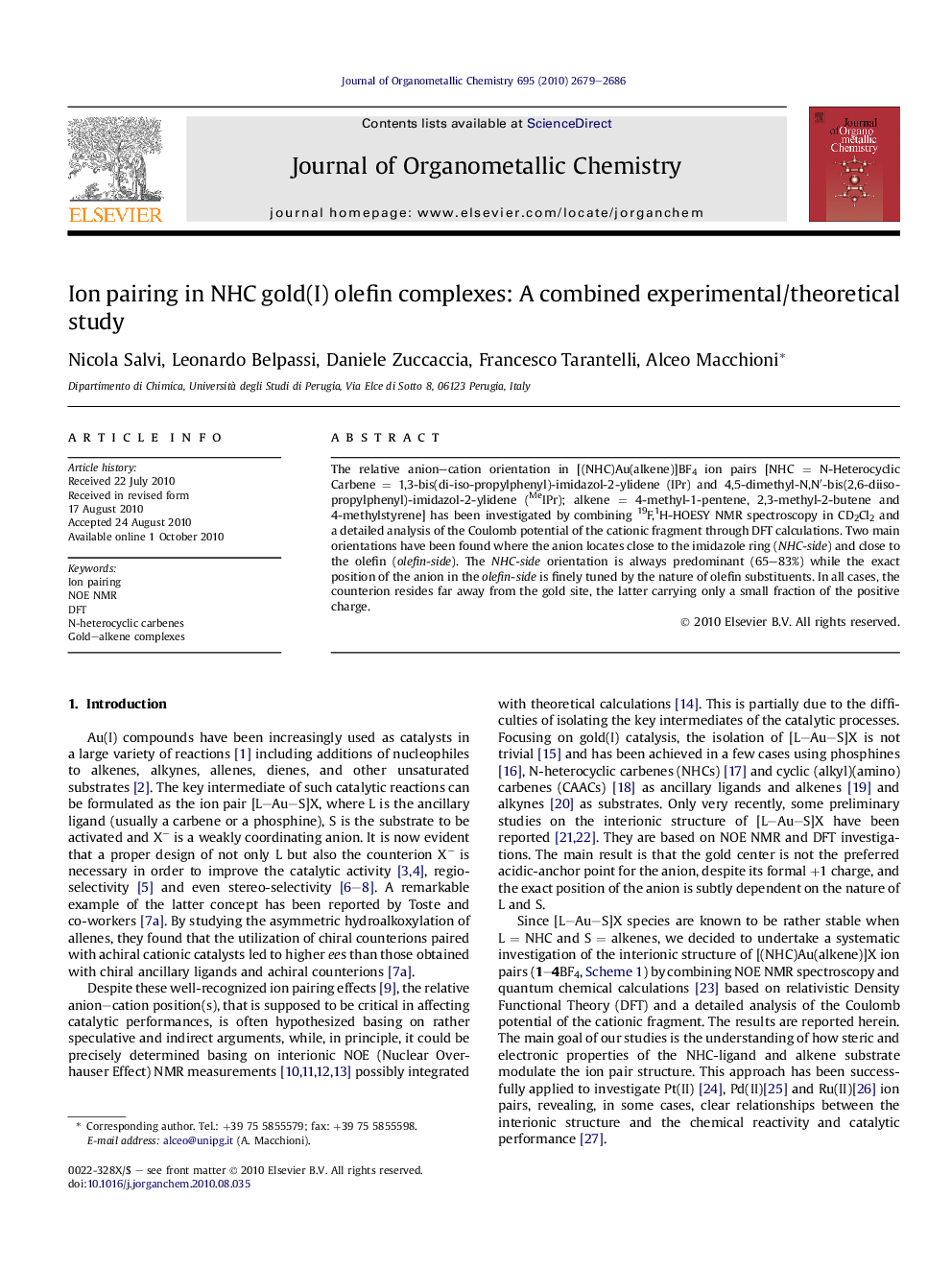| Article ID | Journal | Published Year | Pages | File Type |
|---|---|---|---|---|
| 1322629 | Journal of Organometallic Chemistry | 2010 | 8 Pages |
The relative anion–cation orientation in [(NHC)Au(alkene)]BF4 ion pairs [NHC = N-Heterocyclic Carbene = 1,3-bis(di-iso-propylphenyl)-imidazol-2-ylidene (IPr) and 4,5-dimethyl-N,N′-bis(2,6-diisopropylphenyl)-imidazol-2-ylidene (MeIPr); alkene = 4-methyl-1-pentene, 2,3-methyl-2-butene and 4-methylstyrene] has been investigated by combining 19F,1H-HOESY NMR spectroscopy in CD2Cl2 and a detailed analysis of the Coulomb potential of the cationic fragment through DFT calculations. Two main orientations have been found where the anion locates close to the imidazole ring (NHC-side) and close to the olefin (olefin-side). The NHC-side orientation is always predominant (65–83%) while the exact position of the anion in the olefin-side is finely tuned by the nature of olefin substituents. In all cases, the counterion resides far away from the gold site, the latter carrying only a small fraction of the positive charge.
Graphical abstractThe relative anion–cation orientation in a series of [(NHC)Au(alkene)]BF4 complexes has been investigated by interionic NOE NMR studies and theoretical DFT calculations of the Coulomb potential. Two main orientations have been observed (NHC-side and olefin-side) whose abundances are finely tuned by the nature of the NHC-ligand.Figure optionsDownload full-size imageDownload as PowerPoint slide
